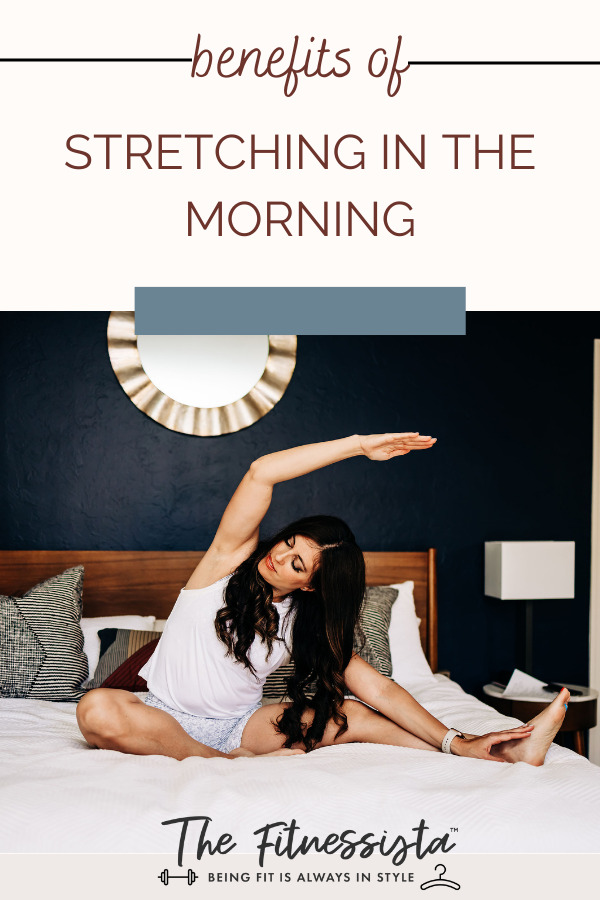Sharing some benefits of stretching in the morning + my favorite morning stretches.
Hi friends! Happy Monday! How was the weekend? Ours was a busy and fun one! Liv’s team crushed it in their last dance competition of the season, and she placed 7th overall for her solo! It was very exciting 🙂
Today, I’m going to chat a bit about stretching. While the research is mixed on stretching, I feel like it can be extremely beneficial. When you stretch, you’re taking your muscles and joints through full range of motion. When you have full range of motion, you’re less likely to compensate during your activities. Compensation can lead to muscle imbalances, altered movement patterns, and injury. Also, stretching feels good!!
Morning is a great time to get in a gentle stretch; it’s just important to remember to move slowly, especially since you’ve been (mostly) still all night.

(Top here // sports bra // shorts)
In today’s post, I’m going to share some of the benefits of stretching in the morning, some of my favorite stretches, and offer tips on how to incorporate it into your daily routine.
5 Benefits of stretching in the morning
Increases flexibility:
Regular stretching can help improve your flexibility and range of motion. This can help you perform daily activities with ease and reduce the risk of injury.
Can reduce stress and tension:
Stretching can help release tension in your muscles, which can help reduce stress and anxiety. It also promotes relaxation and can help you feel more calm and centered throughout the day.
Can improve circulation:
Stretching can help improve circulation by increasing blood flow to your muscles. This can help improve energy levels and reduce fatigue.
Enhanced posture:
Regular stretching can help improve your posture by lengthening tight muscles and reducing tension in your neck, shoulders, and back. This can help reduce the risk of chronic pain and injury.
Boosts mood:
Stretching releases endorphins, which are natural mood-boosters. Starting your day with a quick stretch can help you feel more energized and positive throughout the day.
So, how can you incorporate stretching into your morning routine?
Here are a few tips:
Start small: If you’re new to stretching, start with just a few basic stretches and gradually increase the duration and intensity over time.
Be gentle: Don’t push yourself too hard when stretching. Stretch to the point of mild tension, but not pain.<